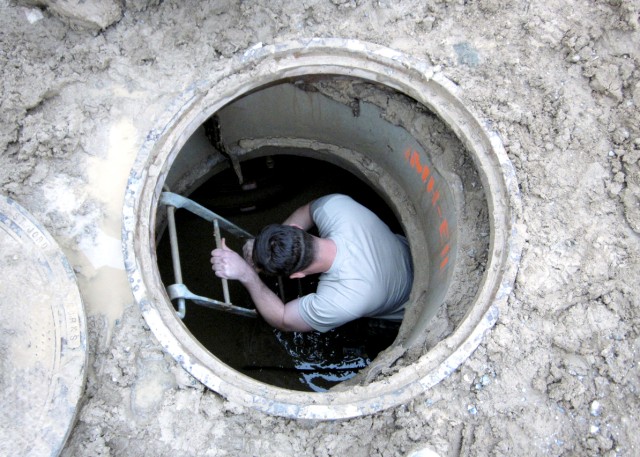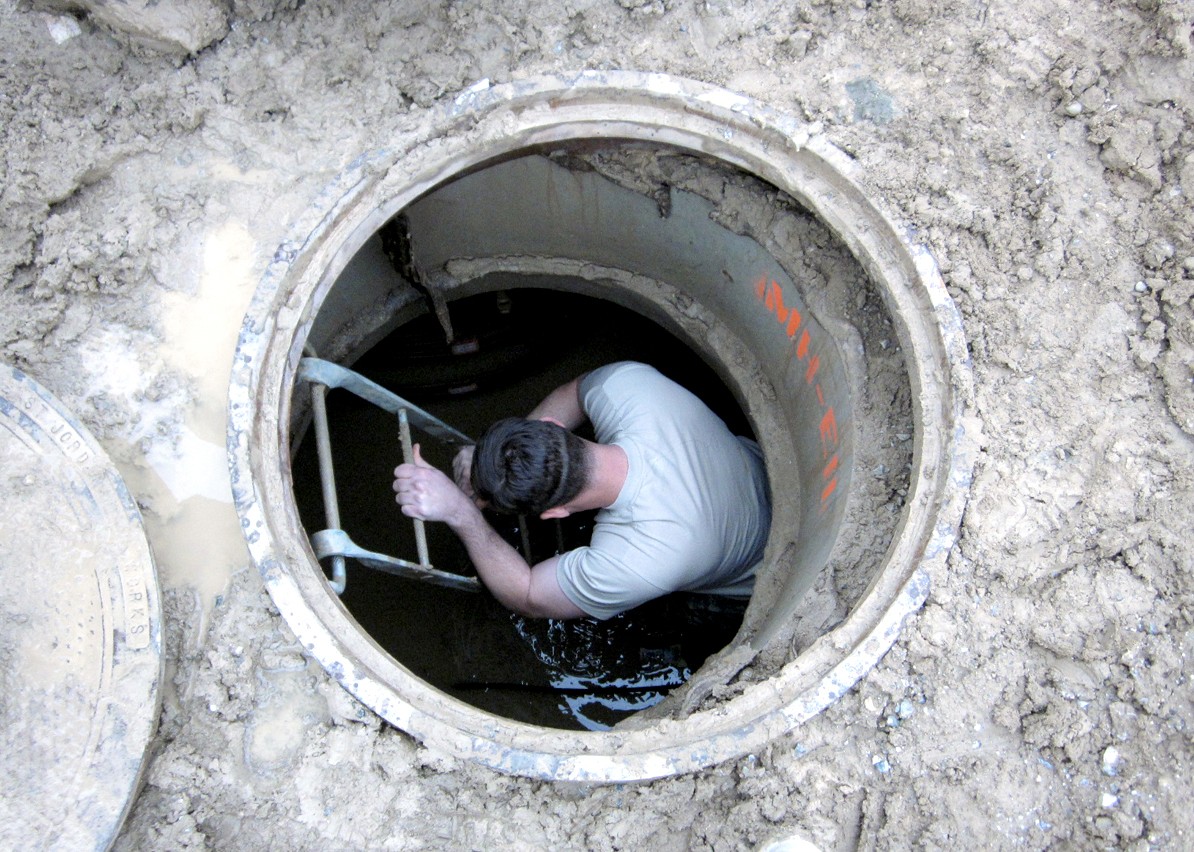
PARWAN PROVINCE, Afghanistan - Modern communication seems to work like magic for the end-user; the press of a power button, the click of a mouse, or the strike of a key and messages send or receive in an instant. And even in areas as austere as Afghanistan, instant communication exists, in part, due to the Soldiers who run the cables.
In Bagram, the freshly developed east side boasts state-of-the-art communications technology, thanks to a collaborative effort of communications Soldiers from 10th Combat Aviation Brigade, 10th Mountain Division (LI).
"It starts with an idea, a plan and a lot of manual labor," said Maj. Scott Herzog, brigade communications officer in charge.
According to Herzog, the idea began with Soldiers learning to splice fiber-optic cables.
"Fiber cable is made of glass, so you have to know what you're doing in order to run lines from the main fiber," he explained. "From there, you splice from the main cable, to connectors, to switches, to ports."
Picture the human circulatory system: arteries carry the main flow of blood to smaller arteries; those arteries carry blood to the capillaries; capillaries then divide and bring the parts of the blood needed in the body. The cable lines work in a similar fashion.
"When you splice into the main line, you connect to a switch," Herzog continued. "The switch converts glass cable to copper wire. The wire sends messages to specific ports. Your computer plugs into a port, and that's how you get your information."
The plan for the east side involves wiring a total of 33 buildings. Of those 33, 18 now possess instant communications, with the remaining 15 still in progress.
However, the most daunting portion of the plan meant running the main fiber cables through manhole systems.
"Since the manhole systems only went so far, we were looking at digging two trenches, splicing into the main cable for wiring, running wires into the buildings, wiring the buildings and establishing ports," said Capt. David Edwards, communications officer in charge for Task Force Phoenix.
Edwards asserts that a project of this magnitude occurs with the assistance of communications Soldiers, lending their skills and experience. He credits the collaboration of the different shops with the overall success.
"We had the brigade S6 himself out in the bad weather with us, climbing down into cold, muddy water to run cable. You know, that really says something; it means a lot," Edwards said.
While Herzog's team from brigade headquarters assisted with the manual labor, Edwards admitted that Staff Sgt. Jason Maldonado's team from Task Force Mountain Eagle took on the brunt of it.
"They really had an interesting time," Edwards said, laughing.
Since the winter months in Bagram bring cold, wet weather, running the cables meant climbing down into cold, wet manholes. In at least one case, the water in the manhole came up to the Soldier's chest.
"We ran two lines of fiber cable through three manholes, which were all about a half mile apart from each other," Maldonado explained.
"It was not an ideal situation," he conceded.
In four days, the team waded through cold water and mud to run the cables through the manhole systems; dig two trenches, each a half mile long; cover the lines in the trenches; and run the wires into the building.
Once indoors, the work proved just as harrowing at moments.
"We had to run wires throughout the building, so we had to walk along the rafters in the ceilings sometimes to make that happen. So, if you don't step in the right spot, you risk falling right through the ceiling," Maldonado explained.
Wiring a single building includes running lines inside and terminating the ends to add connections to run to the switch. In this case, Maldonado's four-man team ran 375 lines to ports, put on the faceplates, terminated the ends, tested the lines, and then labelled the ports.
Spc. Danny Griffin, a cable system installer and member of Maldonado's team, put the meticulous work into perspective. "My motivation is to just get it done; getting to the next mission."
"Definitely a lot of work goes into it," Griffin stressed. "At the start, when you think about everything that needs to happen, it seems mind-boggling. So you just have to keep working and get it done."
Ultimately, it took the team 10 days to complete the project - just 11 days shy of their original projection of three weeks.
"The reason we finished this project so early," Edwards said, "and why it meant so much is because the whole S6 community came together. We had my shop (TF Phoenix), Staff Sgt. Maldonado's team (TF Mountain Eagle), and even the Soldiers at brigade all pulling together."
With a good system in place, the teams expect to finish wiring the east side buildings by the end of the deployment, just in time for the 82nd Combat Aviation Brigade - and subsequent units - to enjoy the magic of full-spectrum communications.
"Just remember," Herzog said, "every time you pick up a phone, receive an e-mail on NIPR, SIPR or Centrix or check out Facebook - the S6 has touched your life."
Related Links:
10th CAB Soldiers, fiber-optic technology keep Bagram's east side humming

Social Sharing